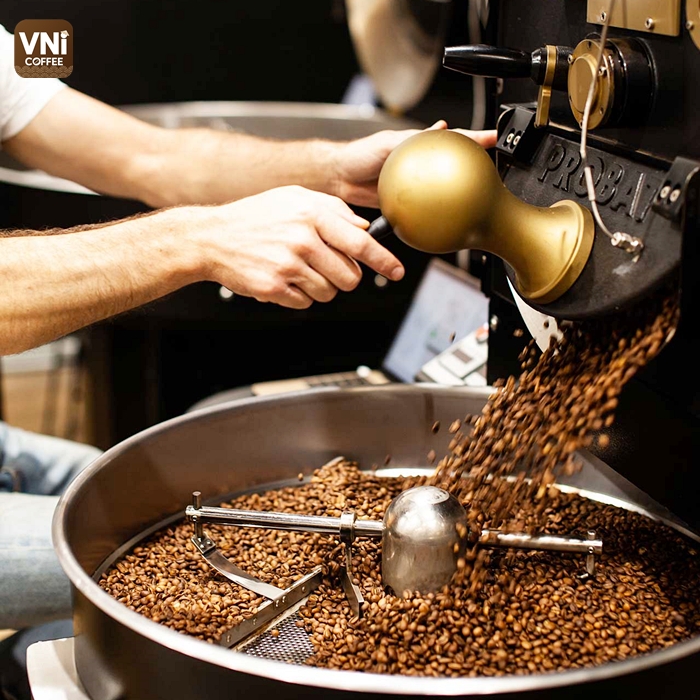
Coffee roasting classifications and their characteristic flavors
Roasting is a thermal process that turns fresh, green coffee beans into the aromatic, dark brown beans we’re all familiar with. This way literally helps bring out the best flavor hidden inside the green beans. Interestingly, different roasting levels also make a variety of flavors as the roasters’ aiming taste; that’s why you find the words “light roast”, “dark roast”, “medium roast”, or even “Vienna roast”, “French roast”, ”Italian roast” on each coffee package. Let’s find out the classifications of coffee roasting levels and their flavor characteristics!
Why does coffee need to be roasted before brewing?
Before roasting, green coffee beans will be slightly crunchy, with an acrid taste and fresh grass smell. The temperature change has changed the coffee beans, altering their true color as well as revealing hidden flavors. At this time, the roasted beans also smell as burning as the coffee we’ve used by now, with a lighter weight as the moisture has evaporated.
When did people start roasting coffee beans?
The process of roasting coffee is supposed to have appeared during the 15th century in the Middle East. The first used tool was simply a thin perforated pan over a flame. The coffee beans were stirred constantly with a spoon to ensure even roasting. Later, the Ottoman Empire and European colonies spread this drink around the world, therefore, roasting tools have also been improved to this day.
Classification of coffee roasting levels
Any degree of roasting will cause a change in the bean’s color, flavor, texture, and mass, whether more or less. During the roasting process, the coffee beans absorb heat and gradually go from green to yellow, brown, dark brown, and finally black. Besides, the higher the temperature, its surface also modifies from dry to oily. To know what roast level the coffee beans are at, we need to match their current color to each specific roasting temperature frame.
It’s necessary to emphasize that there is no perfect yardstick for grading coffee during roasting. Depending on each region the bean comes from as well as on the characteristics, the roasting levels will be divided into innumerable stages. Many people believe that darker coffee contains higher caffeine content, but in reality, lightly roasted coffee has more caffeine.
Here are four levels of coffee roasting that are most widely used, including Light Roast, Medium Roast, Brown Roast, and Dark Roast.
Light Roast (or Cinnamon, New England, American)
This is the first explosion stage, the temperature is about 195-210 degrees, and the coffee beans begin to expand. Coffee begins to caramelize at a temperature of 197. At this stage, the surface of the beans is dry, most acidic, and light in texture. At this point, the flavor is not clear but is very rich and still retains a rather bitter taste like green coffee beans.
- Suitable brewing: Drip, Chemex, Pour-over
Medium Roast (or City, City Plus, Full City)
The temperature of this stage is around 210-220. The beans continue to expand, at this time the typical original flavor of coffee begins to appear. Dry seed surface. The sugar in the seeds is caramelized and the acidity decreases. The aroma becomes more diverse, with a slight aroma of typical roasted coffee, and a full body. The sweetness gradually increases, and the bitter taste softens.
- Suitable brewing: Syphon, French press, Drip, Aeropress
Dark Roast (or Double Roast, French, Italian, Spanish)
The temperature of this stage is 230-240. The surface of the beans is more oily, the physicality is reduced, the color of the beans begins to darken, the caramelization stage ends, and the coffee beans begin to burn. Coffee beans only have the characteristic roasted coffee flavor, light-body, bitter taste, no longer sour and sweet taste.
- Suitable brewing: Vietnamese filter coffee, Espresso, Moka pot, Ibrik (Turkish style)






